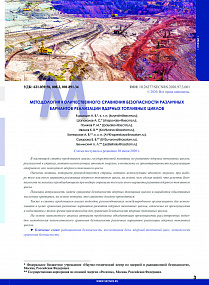Article is received on July 8, 2020This article presents an analysis of national policies in the field of nuclear fuel cycles development, implemented in countries which widely utilize atomic energy. The analysis is focused on aspects of implementation of an open or closed nuclear fuel cycle.
The article also characterizes motives that are guided by the countries, when choosing one or another option for the implementation of the nuclear fuel cycle. Based on the characteristics given it is concluded that safety aspects were not predominant when the countries choose one or another option for nuclear fuel cycle development.
Importance of the comparison of nuclear fuel cycles by their inherent safety and the significance of the development of credible numerical criteria, based on which this comparison should be carried out, is shown in the article.
The article also presents an analysis of the approaches which are recommended by international organizations (IAEA, UNSCEAR, ICRP, NEA OECD) for use in order to compare the different nuclear fuel cycles, and shows the advantages and disadvantages of the approaches in terms of applicability for such comparison.
On the basis of the analysis performed and on the basis of combination of the advantages of the approaches which are considered, the authors have proposed the methodology for the quantitative comparison of nuclear fuel cycles, based on their safety characteristics.
Keywords: radiation safety, collective dose, nuclear fuel cycle, methodology for safety comparison.
Article language: Russian. Pp. 3–14. DOI: 10.26277/SECNRS.2020.97.3.001.


